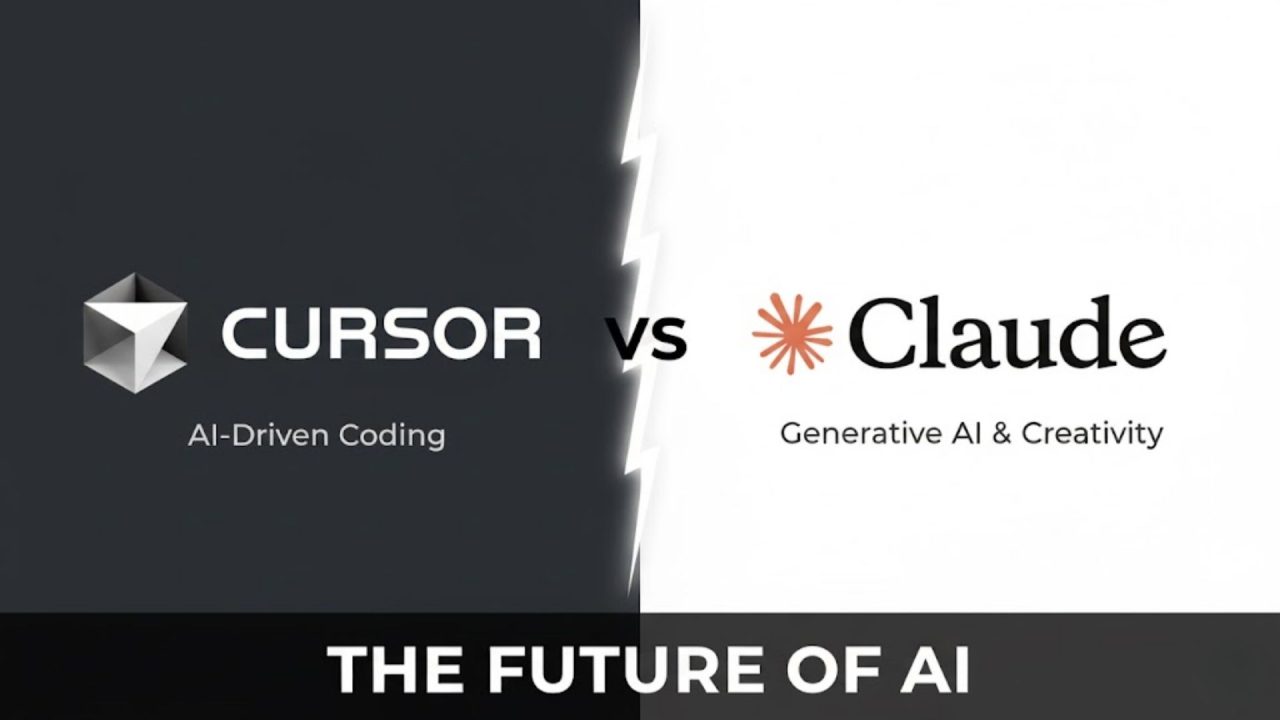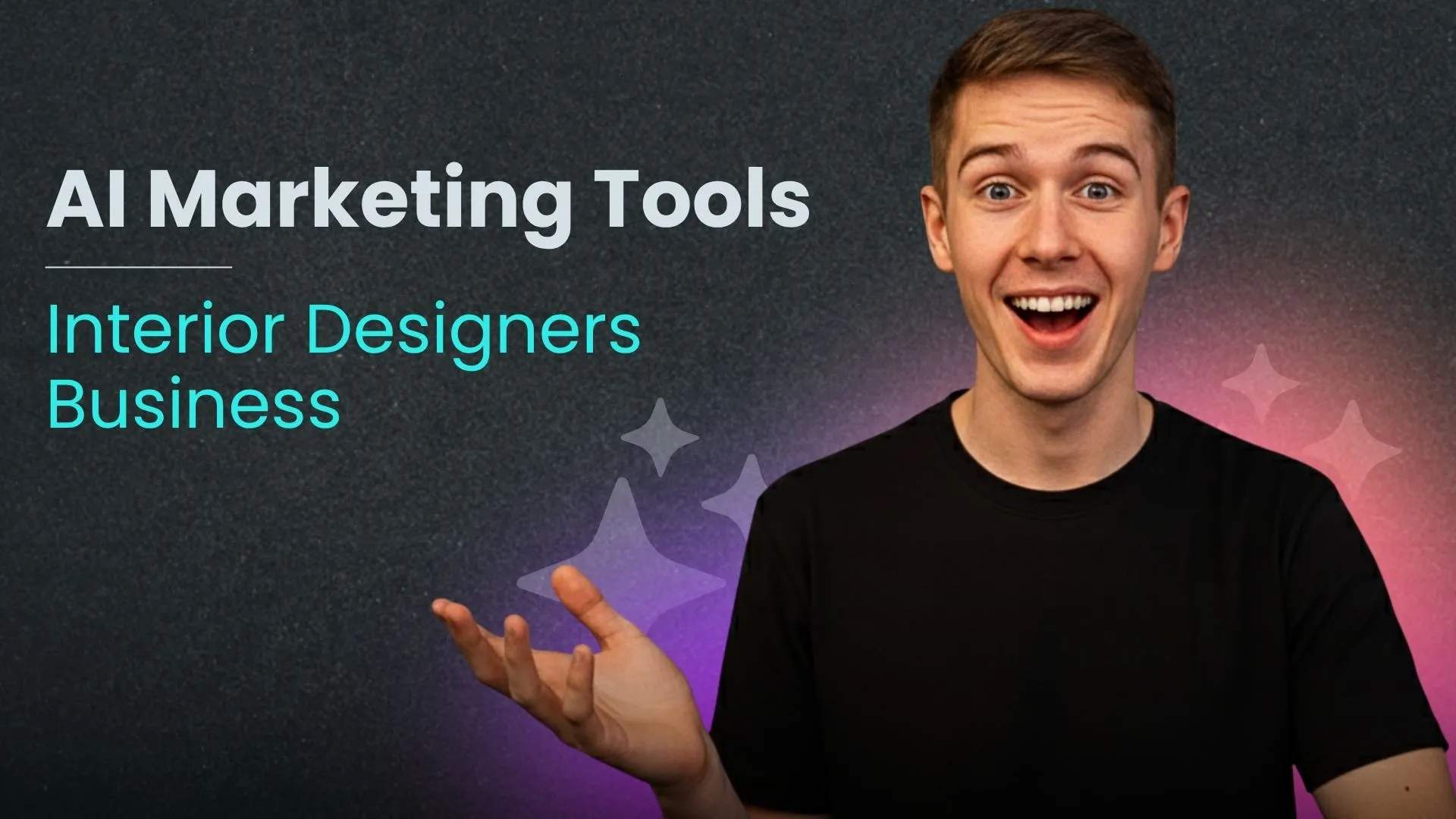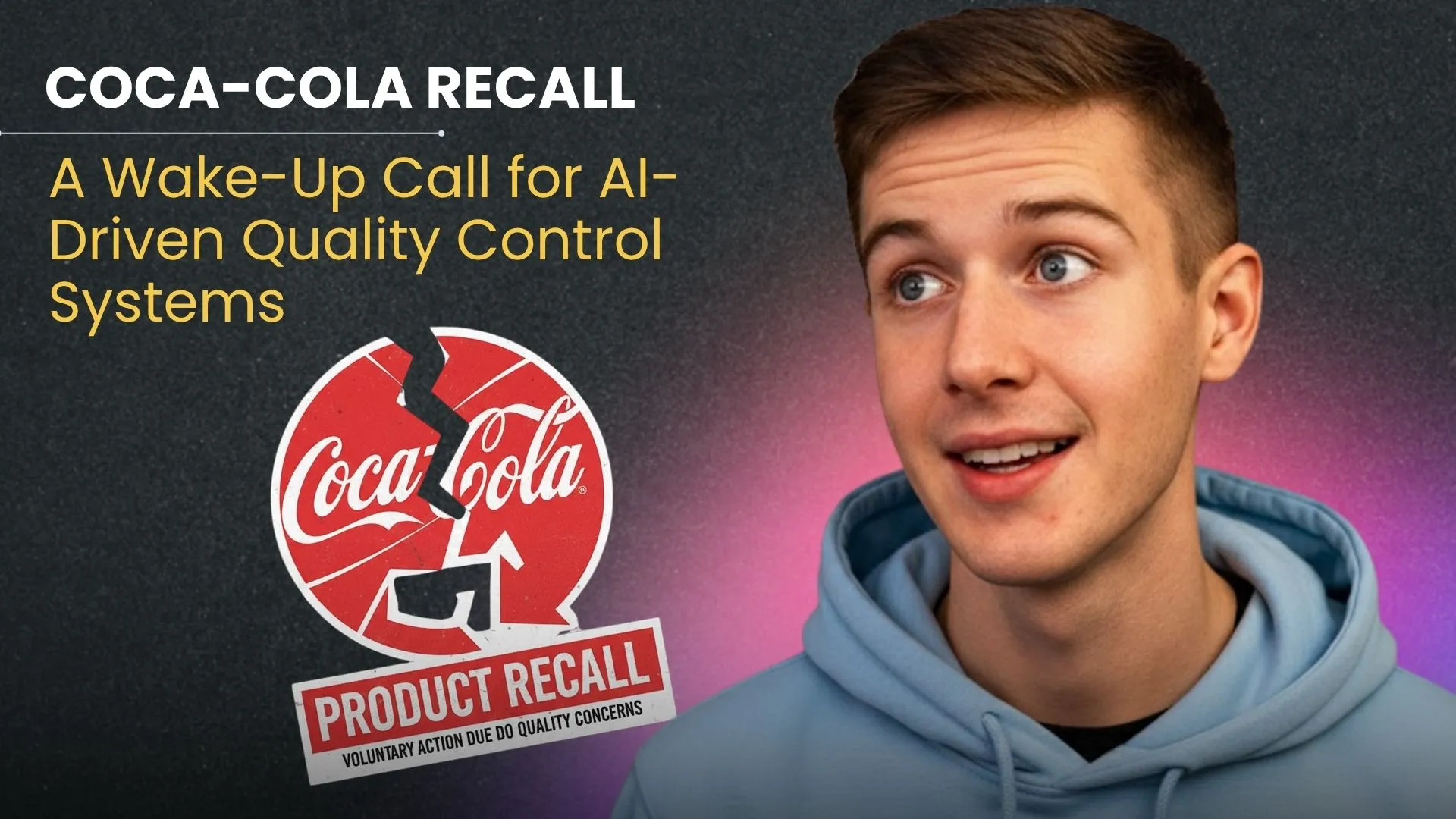No one can deny the fact that Artificial Intelligence has now officially taken the center stage. AI tools are fast changing the way we think, work and create, whether through writing code or creating stories. Two names are emerging on the list of advanced models of AI more than ever — Cursor and Claude.
They both have dramatically changed the manner in which people can interact with technology, except that they do it dramatically differently. What then will happen when these two giants in AI collide? Who is the winner in the race towards controlling the world of AI-driven coding and creativity?
Launch Your App Today
Ready to launch? Skip the tech stress. Describe, Build, Launch in three simple steps.
BuildLet’s decode the future — one algorithm at a time.
The Rise of AI Tools in Coding and Creativity
Back in the days, It took hours of debugging and midnight oil burning to write a code. Currently, the narrative is being rewritten using AI assistants such as Cursor and Claude. They are not just assistants, they are virtual partners.
AI has transcended way past providing simple answers. It is now coding, analyzing errors, explaining logic, and even proposing creative design ideas. To developers, it is like having a 24/7 co-worker who never gets weary nor does he complain. To the content creators it is as though they have a muse that can transform a blank page into a masterpiece within seconds.
But who does it better, Cursor or Claude?
Well. we will get the answer soon!
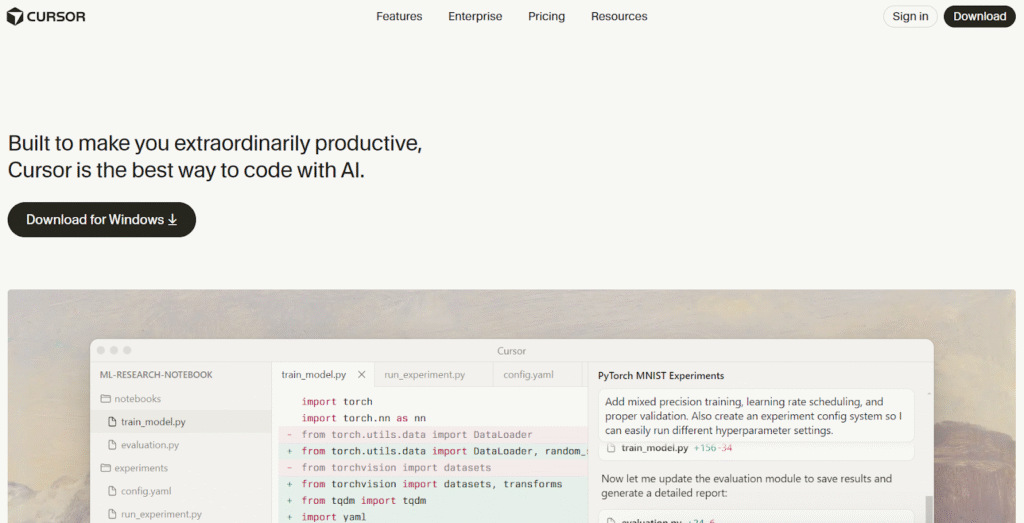
Cursor has been said to be a dream of a developer. It is an artificial intelligence-based coding companion built to know your workflow, anticipate your next intention, and to make complicated coding actions easier. Imagine Cursor as your workmate who reads your mind even before you complete typing.
It works perfectly with your code editor, works out what you mean, and gives smart code completions that feel disturbingly human. Cursor does not just automatically produce code it comprehends it. That’s the real game-changer.
Key Strengths of Cursor
- Context-Aware Code Generation: Cursor doesn’t blindly spit out lines of code. It interprets your project’s structure and logic to provide accurate, usable suggestions.
- Error Detection and Debugging: It spots bugs before you do, offering quick fixes that actually make sense.
- Natural Language to Code: Just describe what you want, and Cursor translates it into executable code — whether it’s Python, JavaScript, or C++.
- Seamless Integration: It plugs into your favorite IDEs, helping developers stay in their zone without switching tools.
- Team Collaboration: It can analyze multiple files, understand dependencies, and even assist teams in maintaining consistent coding styles.
Cursor’s core appeal lies in precision and practicality. It’s less about chatting and more about doing.
Claude: The Conversational Genius
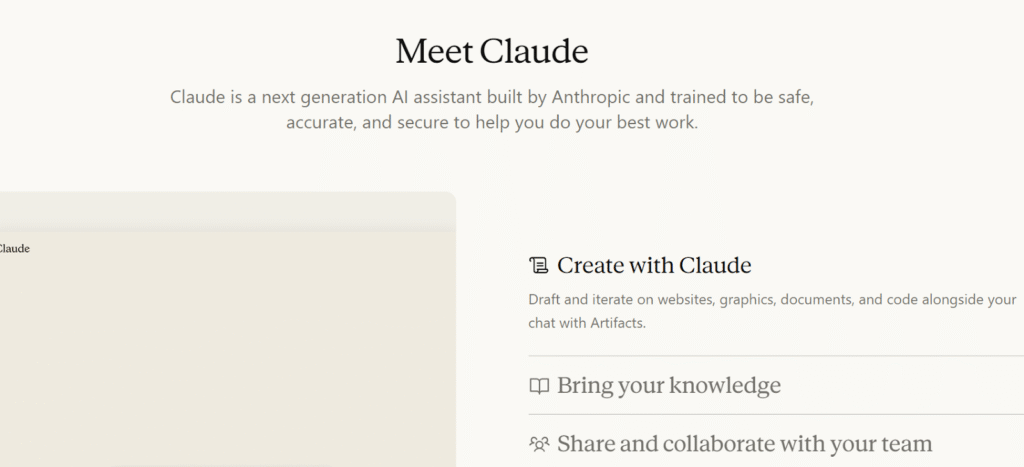
If Cursor is the coder, Claude is the conversationalist. Created by Anthropic, Claude is an advanced AI language model built to understand, reason, and generate text that feels remarkably human.
Claude is named after Claude Shannon, the “father of information theory,” and it certainly lives up to that legacy. Where Cursor thrives in structured logic, Claude shines in abstract thinking and creative expression.
Key Strengths of Claude
- Deep Natural Language Understanding: Claude grasps complex prompts with nuance, tone, and emotional depth.
- Creative Writing Power: Whether it’s brainstorming marketing campaigns or scripting dialogues, Claude adds flair and imagination.
- Code and Documentation Support: It can explain, refactor, and generate code — but its strength lies in making code more readable and human-friendly.
- Ethical Reasoning and Contextual Awareness: Claude is built with “Constitutional AI,” meaning it follows safety and ethical principles while generating content.
- Multi-Tasking Proficiency: From writing emails to summarizing research, Claude can juggle a wide range of tasks with ease.
Claude isn’t just a writing assistant — it’s an idea partner. It helps users explore thoughts they didn’t even know they had.
Cursor vs Claude: What’s the Difference?
Now that we’ve met both, it’s time to pit Cursor and Claude against each other in their natural habitats — coding and creativity.
1. Coding Accuracy
Cursor clearly dominates this space. It’s built specifically for developers and fine-tuned to handle real-world coding challenges. From code completion to context-based debugging, Cursor operates like a smart co-developer.
Claude, while capable of writing and understanding code, often lacks Cursor’s precision. It’s better suited for explaining concepts or documenting projects rather than generating intricate, multi-file codebases.
Winner: Cursor
2. Ease of Use
Claude’s conversational tone makes it incredibly easy to use. You don’t need to speak in “developer language” to get results. Cursor, on the other hand, requires some familiarity with coding environments.
So, if you’re a writer or strategist dabbling in light code work, Claude feels more natural. But if you’re a developer who codes daily, Cursor feels like home.
Winner: Tie — depends on your use case.
3. Creativity and Ideation
Claude steals the spotlight here. It can brainstorm storylines, design product pitches, and generate creative content with personality and flair. Cursor, being logic-focused, isn’t built for poetic creativity.
That said, Cursor’s creativity lies in efficiency — finding smarter solutions to coding problems. It’s creative in function, while Claude is creative in form.
Winner: Claude
4. Learning and Adaptability
Both tools are impressive learners, but in different ways. Cursor learns from your project’s codebase — the more you use it, the better it aligns with your coding patterns.
Claude learns conversational context. It remembers tone, writing style, and the emotional intent behind your queries.
Winner: Tie — both excel within their ecosystems.
5. Collaboration and Workflow Integration
Cursor integrates deeply into developer workflows, supporting team environments and version control. It’s ideal for collaborative coding in real-time.
Claude, while not directly embedded in development tools, excels in team communications — generating summaries, writing documentation, and maintaining clarity in project updates.
Winner: Cursor for coding teams, Claude for content teams.
Pricing
| Plan / Tier | Cursor | Claude |
|---|---|---|
| Free / Entry | Free plan with limited agent requests and tab completions. | Free plan available with usage limits that reset every 5 hours. |
| Tier 1 | Pro – $20 / month, includes $20 of API-agent usage + bonus usage + unlimited tab completions. | Pro – $20 / month, usage limits – 45 messages per 5 hours (varies by message length/model), context window up to 200K tokens. |
| Tier 2 | Pro Plus – $70 / month (~$70 of API-agent usage + bonus usage) according to some sources. | Max (5×) – $100/month for 5× usage of Pro. |
| Tier 3 | Ultra – $200 / month, includes $400 API usage + bonus usage + ~20× usage multiplier on major models. | Max (20×) – $200/month for 20× usage of Pro. |
Beyond Code: The Creative Divide
AI is no longer confined to a single role. Both Cursor and Claude are proof that artificial intelligence can adapt to the human way of working.
Cursor represents structured creativity — turning logic into elegant code. It’s about precision, performance, and predictability. Developers love it because it cuts through complexity without cutting corners.
Claude embodies imaginative creativity — turning ideas into expressive, engaging narratives. It can shift tones, mimic writing styles, and build emotional resonance in a way that feels almost human.
Together, they represent the dual nature of modern AI: analytical intelligence meets emotional intelligence.
The Future of AI
The next wave of AI innovation isn’t about competition — it’s about collaboration. Imagine a workspace where Cursor writes the code while Claude writes the documentation. Cursor automates the backend logic while Claude crafts the frontend narrative for users.
This synergy is where the future of AI lies. It’s not one against the other, but both working together to amplify human potential.
In fact, many companies are already experimenting with hybrid setups — using Cursor to handle the technical grind while Claude manages creative communication and product storytelling.
The result? Faster workflows, fewer errors, and a massive boost in innovation.
Why We Humans Still Matter
Even with all the brilliance AI brings, one truth remains — humans are irreplaceable.
Cursor can write flawless code, but it doesn’t understand human emotion. Claude can write emotional prose, but it doesn’t live those emotions. What makes us human — empathy, instinct, imagination — cannot be programmed.
AI enhances our skills, but it doesn’t define them. The magic happens when human intuition meets machine intelligence.
Developers who use Cursor are still the architects of logic. Creators who use Claude are still the authors of imagination. AI is simply the bridge between thought and execution.
Best Alternative: Imagine.bo — AI No-Code App Builder
If Cursor and Claude represent the technical and creative sides of AI, Imagine.bo sits comfortably between them — a practical bridge that lets anyone turn ideas into real, working applications without needing to code.
Imagine.bo is designed to make app creation accessible to everyone. Instead of writing lines of code or managing frameworks, users describe what they want, and the platform’s AI takes care of the heavy lifting — from architecture to deployment. It’s particularly appealing for founders, marketers, and creators who want to bring an idea to life quickly without getting lost in technical complexity.
How It Works
The process is simplified into three steps: Describe, Build, Launch and get expert developers help if needed at any point . You describe your idea in plain English, the system generates a working base for the app, and you refine it visually using drag-and-drop tools. Within hours, you can test and deploy something functional — a stark contrast to traditional coding timelines.
Key Features
- No-Code Visual Builder: A clean interface lets users design workflows, layouts, and logic visually — no Python or JavaScript required.
- AI-Driven Architecture: The platform interprets your description and generates an app framework with relevant features and integrations.
- Scalable & Secure Infrastructure: Apps deploy seamlessly to major cloud providers like AWS or GCP and come with built-in security and compliance standards (GDPR, SOC2).
- Expert Support: Real engineers are available to assist when users hit technical walls — a level of support that’s often missing from typical no-code tools.
- Built-In Growth Tools: Analytics, mobile responsiveness, and SEO-friendly designs help users grow and optimize their applications after launch.
Why It Matters
Imagine.bo fills the gap for users who want the productivity of Cursor and the accessibility of Claude, but without needing to master either coding or prompt-engineering. It’s less about replacing developers and more about lowering the barrier to building functional, scalable software.
In a landscape where AI tools are often specialized — one for code, another for content — Imagine.bo offers a unified path from idea to implementation, making it a strong alternative for creators who value speed, simplicity, and autonomy.
Which One Is Best for You: Cursor or Claude or Imagine.bo
Your choice depends on what you’re building.
- Cursor is best for developers who want an intelligent coding partner that understands context and speeds up debugging.
- Claude suits writers and creatives who value clarity, tone, and original ideas.
- Imagine.bo is ideal for entrepreneurs who want to build and launch apps fast without coding.
In short: Cursor for coders, Claude for creators, Imagine.bo for builders. Each fits a different mindset, but all aim to make work faster, smarter, and more human.
Conclusion
AI tools like Cursor, Claude, and Imagine.bo show how technology is reshaping creation. Cursor empowers developers, Claude inspires thinkers, and Imagine.bo enables anyone to build without code. Each tool highlights a different strength – precision, imagination, or accessibility. The future isn’t about choosing one over the other but combining them. When human ideas meet AI efficiency, innovation accelerates. Together, they mark the next era of intelligent collaboration – where building becomes as natural as imagining.
Launch Your App Today
Ready to launch? Skip the tech stress. Describe, Build, Launch in three simple steps.
Build
